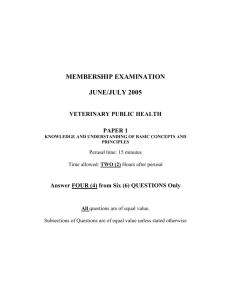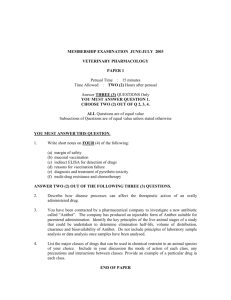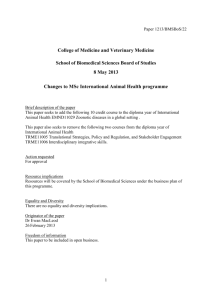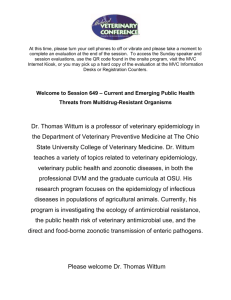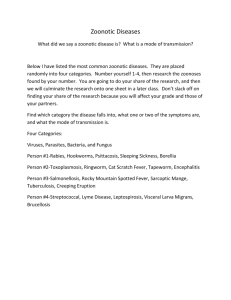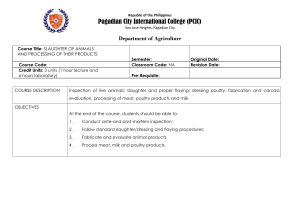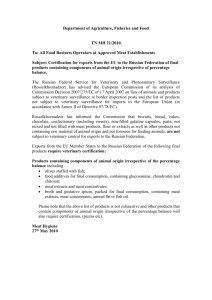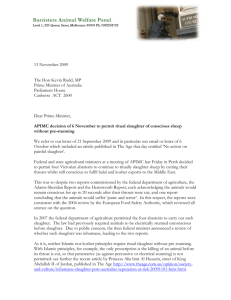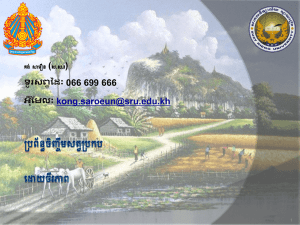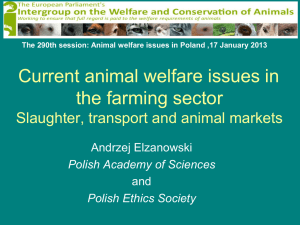Veterinary Public Health
advertisement
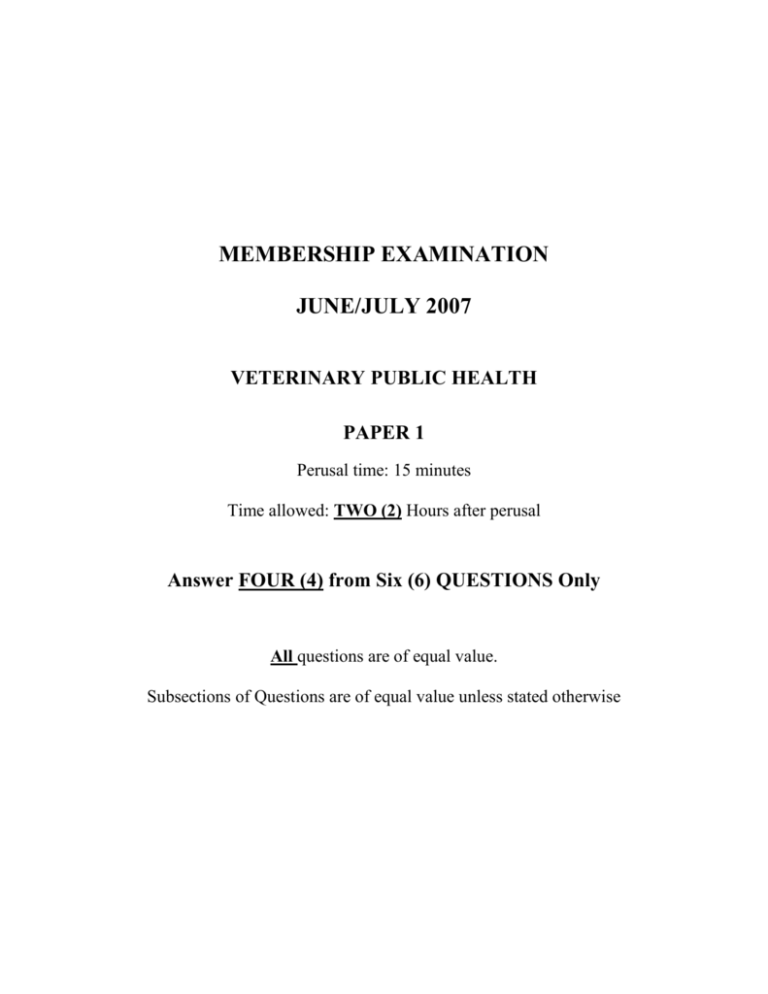
MEMBERSHIP EXAMINATION JUNE/JULY 2007 VETERINARY PUBLIC HEALTH PAPER 1 Perusal time: 15 minutes Time allowed: TWO (2) Hours after perusal Answer FOUR (4) from Six (6) QUESTIONS Only All questions are of equal value. Subsections of Questions are of equal value unless stated otherwise PAPER ONE – VETERINARY PUBLIC HEALTH 2007 Answer FOUR (4) from Six (6) Questions Only 1. Outline the main methods used for stunning and slaughter of animals at meat works in Australia including descriptions of the equipment used for stunning and restraint. Discuss the advantages and disadvantages of the methods you have outlined, including comments on humane aspects of the slaughter process. 2. Write short notes on FOUR (4) of the following: a. b. c. d. e. f. Transport of stock for slaughter Psychrotrophic bacteria in relation to meat hygiene Halal slaughter Handling of stock pre-slaughter and meat quality The relationship between the hides of animals and meat spoilage Relationship between ultimate pH and meat quality. 3. Discuss the following statement: “Contamination of food is a public health and trade issue”. 4. Compare and contrast the characteristics of Dark Firm Dry Beef (DFD) and Pale Soft Exudative Pork (PSE). Discuss how they occur and how they might be prevented. 5. Discuss the potential human health problems resulting from contamination of animal feedstuffs with dioxin. What are the potential routes for such contamination? What measures could you as a veterinarian suggest that your farm client put in place to minimise the risk of exposure of stock to dioxin? 6. Define HAACCP and describe its application to the slaughter of veal calves. END OF PAPER MEMBERSHIP EXAMINATION JUNE/JULY 2007 VETERINARY PUBLIC HEALTH PAPER 2 Perusal time: 15 minutes Time allowed: TWO (2) Hours after perusal Answer FOUR (4) from Six (6) QUESTIONS Only All questions are of equal value. Subsections of Questions are of equal value unless stated otherwise PAPER TWO – VETERINARY PUBLIC HEALTH 2007 Answer FOUR (4) from Six (6) Questions Only 1. A number of new zoonotic agents have emerged in the past decade, causing serious problems in many countries. Using at least THREE (3) examples of recently emerged pathogens discuss their origins, animal reservoirs, clinical syndromes in people, transmission and spread and any other epidemiological features. Discuss measures taken for control and surveillance of these diseases and their level of success. 2. While travelling in Africa you purchase and consume unpasteurised milk from a small village store. List the potential zoonotic infections that you could be at risk of contracting and discuss their epidemiology in dairy cattle and dairy goats. Briefly describe the principles of pasteurisation and how they could be applied in a village situation. 3. Antibiotic resistance is an increasingly important public health issue in many parts of the world including Australia. Discuss why use of antibiotics in food producing animals is regarded as a contributor to this human health problem. Illustrate your answer with specific examples. 4. Over the last few years, cities in Australia and elsewhere have experienced outbreaks of Cryptosporidium infections. Discuss the aetiology and epidemiology of such disease outbreaks. Discuss the effectiveness of control measures that might be applied to prevent and control outbreaks. 5. Discuss the aetiology and epidemiology of Taenia infections in Australia. What control measures can be used to reduce human exposure to these parasites? 6. Write short notes on FOUR (4) of the following: a. b. c. d. e. f. g. Reservoirs and transmission of E. coli O:157 Tick-borne zoonoses Food-borne parasitic zoonoses Zoonotic strains of avian influenza Leptospirosis in agricultural workers/veterinarians Brucellosis control programmes Rabies and bat lyssaviruses END OF PAPER
